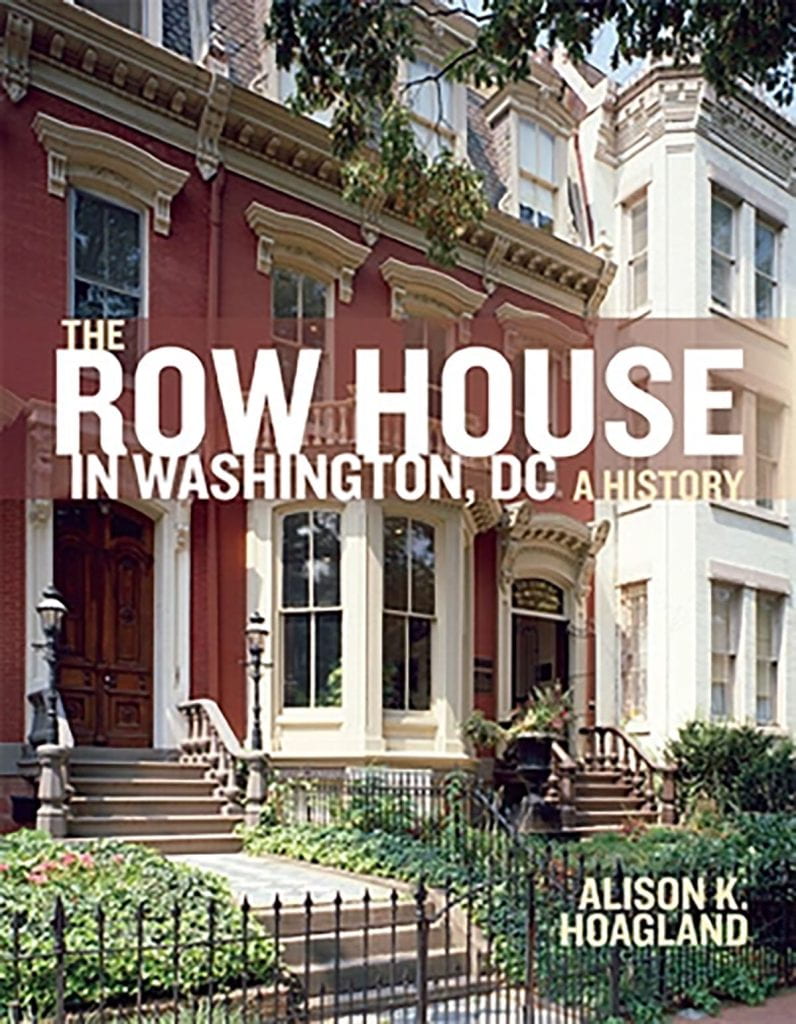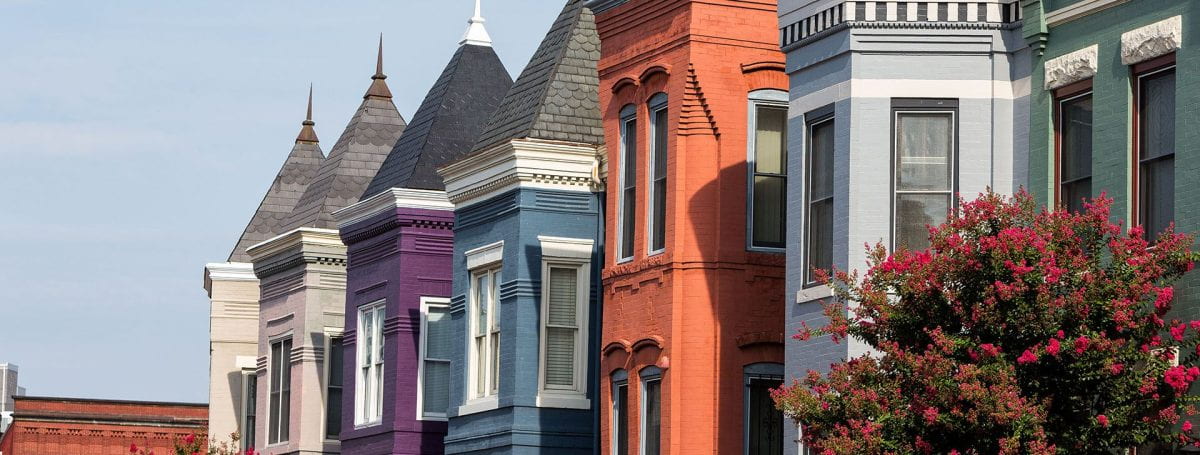By Aidan Brown, B.S. ’26, Biology
Alexis Frazee, B.S. ‘26, Accountancy
Row houses are found throughout Washington, D.C., and their iconic architecture is a highlight of many neighborhoods. Despite the popularity of row houses, their history is not widely known, especially the links between the evolution of these structures and the development of D.C. over time. On March 4, 2024, The George Washington University Museum and The Textile Museum’s D.C. Mondays series featured Alison K. Hoagland, author of The Row House in Washington, D.C.: A History (University of Virginia Press, 2023). Hoagland is a professor emerita of history and historic preservation at Michigan Technological University and has written several books on the vernacular architecture of the United States. She earned a master’s degree in American studies from the George Washington University.

The program focused on the unique story of the D.C. row house, where national and local history intersect. Originally a symbol of middle-class life in Washington, row houses were long an affordable option for families. However, racial housing covenants affected who could live in them and where they could live. Through the mid-20th century, clauses in property deeds effectively segregated swaths of D.C.’s row houses. These discriminatory practices shaped whole blocks in the District—and in many American cities—before the U.S. Supreme Court overturned the practice in 1948.
Hoagland’s research dives deep into row-house floor plans. Windows and ventilation characteristically stayed on front and back facades over time, but other features varied. D.C. laws posed challenges for architects, affecting designs. For example, bay windows were prohibited until 1871 and bathrooms were required to have a window until 1909. Changes in the architecture of row houses reflected changing local laws across centuries.
Hoagland’s book also prominently features row-house owners. Hoagland carefully traced the home ownership history of Josephine Patterson, an African American woman who moved to numerous parts of the city throughout her life. Hoagland reviewed census records to determine Patterson’s cohabitants. This research provided further insight into what living in these homes truly entailed and the ways a perspective buyer’s race could affect where they purchased row houses.
Ultimately Washington’s row houses reflect the city’s history, from changing laws to racial politics. You can watch a video of this D.C Mondays program below and browse upcoming talks on the museum website.
This post was written by students in Professor Jessica McCaughey’s COMM 3190 class at the George Washington University.
About the Authors
Aidan Brown hails from New Jersey and is an undergraduate at GW majoring in biology with a concentration in ecology, environment and evolution, and minoring in computer science. He is also a member of the university’s club rowing team and plans to attend graduate school.
Alexis Frazee is an undergraduate at GW majoring in accountancy with a concentration in business analytics. She is a member of the co-ed business fraternity Delta Sigma Pi and plans to pursue a career in accounting and obtain her CPA license.
Header image: Row houses in Washington, D.C. © harmantasdc/Adobe Stock.
